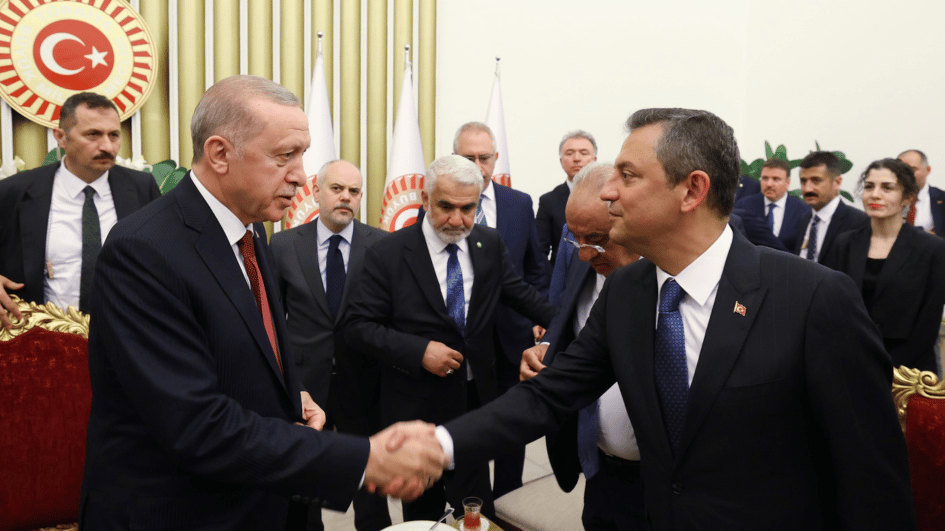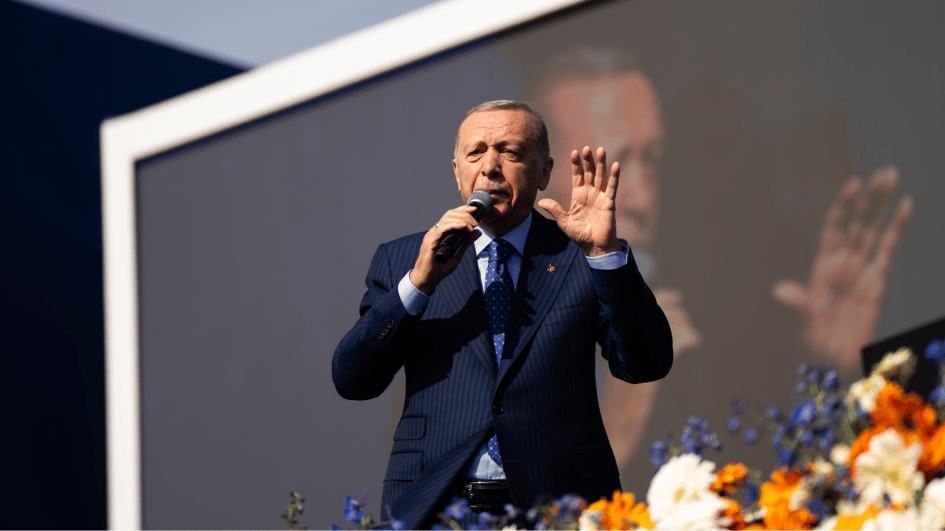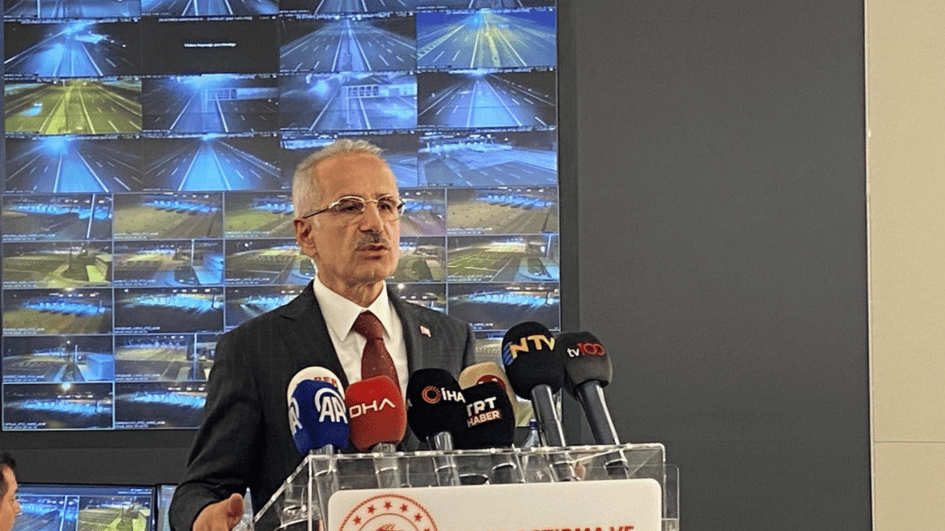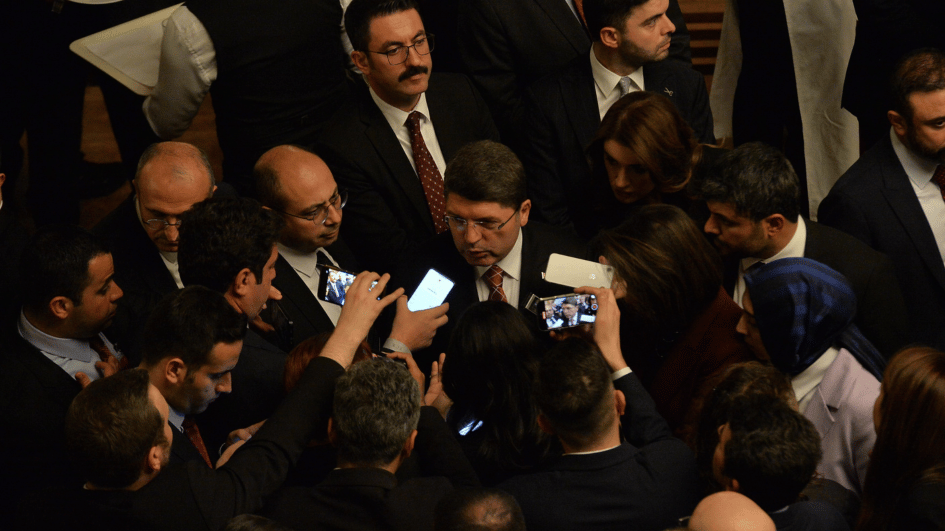Turkey’s peace process still on
Lately, we all have been wondering if the peace process in Turkey is over or still on. Only when President Erdoğan said two weeks ago that the process is “in the fridge,” it became clear that it is on “stand by” mode.
Yet when is it going to get out of that fridge? And once it resumes, what are the new parameters going to be?
I had the chance to learn the answers of these questions speaking to various government officials in Ankara last week.
First of all: Why has the process been frozen? Officials point at three key breaking points which led to this result. The first one is the “Kobane riots,” which took place October 6-7, 2014. Kurds in Turkey protested against the government’s perceived inaction toward Kobane’s siege by the Islamic State of Iraq and the Levant (ISIL) in northern Syria.
According to the government, the second breaking point is the aftermath of Dolmabahçe Palace meeting between government representatives and the Peoples’ Democratic Party (HDP) on Feb. 28. At the so-called “Dolmabahçe meeting,” Öcalan’s call to the Kurdistan Workers’ Party (PKK) saying it must convene a congress to end the 40-year armed conflict was read out, along with a 10-point declaration.
Officials claim that the HDP took a destructive and negative stance following that declaration, by presenting the mentioned points in that declaration as pre-conditions for disarmament.
In my tête-à-tête with Deputy Prime Minister Yalçın Akdoğan, he specifically added that they were also annoyed by the HDP’s efforts to present that declaration as a “framework agreement” between the two sides whereas, he stated, it was only Öcalan’s message.
Erdoğan had later criticized the Dolmabahçe meeting as “wrong” and “unfortunate.” Akdoğan explained the reasoning behind Erdoğan’s remarks was the perception of a “framework agreement” created by the HDP following the meeting. Therefore, Erdoğan’s discomfort seems to have emerged only after that declaration.
For the third breaking point, government officials point at the election campaign of the HDP prior to the general elections on June 7. They claim the HDP caused provocation by harshly targeting President Erdoğan in the run up to elections. They oppose this due to the fact that Erdoğan is not the leader of a political party and because he is the one who initiated the peace process. Hence, they claim, this campaign greatly harmed the peace process.
Yet the process is not over. Yalçın Akdoğan himself made this clear, saying “We take the process seriously; it is not over.”
Moreover the Turkish state continues to be in contact with Öcalan. The state institutions in question are Turkey’s Undersecretariat of Public Order and Security (KDGM) and National Intelligence Agency (MİT).
Yet the reason why Öcalan’s messages are not made public anymore is the political environment in Turkey. The government doesn’t find it proper to make Öcalan visible during a time when we receive news daily about martyrs.
Then when will the peace process get out of that fridge? It will resume only when the PKK declares a state of inaction and starts withdrawing its forces from Turkey. In Ankara, I got the impression the PKK might make such a declaration before the upcoming elections on Nov. 1.
However, officials emphasize this should not only be a tactical step but instead needs to be applied, with a withdrawal following immediately.
Yet how will the process continue? What will be its new parameters? At the moment, the HDP is out of the equation. In other words, its representatives don’t play a role anymore. Instead state institutions are in play, i.e. the MIT and KDGM.
On the other hand, the formation of an “observation committee,” which would monitor both sides of the process to see if they were acting in accordance with the negotiations, is not on the agenda anymore. Yet it might gain currency again. Akdoğan made a critical remark on this point. He said he will not say “what will not be done” anymore since “conditions change all the time.”
It is also crystal clear that the distance between the main focal points of the Kurdish movement, i.e. Öcalan, the HDP and PKK, is growing.
Since the very beginning of the peace process, the PKK has been uneasy about the role Öcalan has been playing. Hence, it has kicked Öcalan’s legs underneath the table since they cannot target Öcalan openly as the iconic leader of the Kurdish movement.
Yet, lately, the HDP and PKK also seem to be at odds. Last week upon HDP Chairman Selahattin Demirtas’ call that the PKK cease attacks, Duran Kalkan, a PKK leader, harshly criticized the HDP for not having been “sufficiently successful in politics.”
The reason of this split is that the electoral victory of the HDP on June 7 seriously jeopardizes the PKK’s existence.
According to government officials, the HDP and Öcalan are also at odds these days. They claim Öcalan blames the HDP for not having been able to manage the peace process. Akdoğan states Öcalan is also annoyed by some statements that the HDP makes on his behalf.
Looking at the big picture, two things become as clear as crystal: The Justice and Development Party (AKP), HDP, peace process, Turkey are all equally harmed by the PKK.
Secondly, the growing distance between the three focal points of the Kurdish movement mostly harms the peace process. The more distant they get from each other, the more distant peace becomes.
Hence everyone has to do his own part. The HDP has to urgently remove the PKK’s tutelage over the HDP. The government, on the other hand, should support the HDP’s integration to the system since this is the only way to exclude arms.











